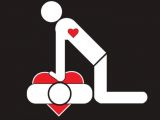When they released “Stayin' Alive” back in 1977, pop music group the Bee Gees probably had no idea that this song would go on to save hundreds, if not thousands of lives. Still, as it turns out, this tune has what it takes to revive people. Literally.
Thus, specialists say that performing CPR (cardiopulmonary resuscitation) to the beat of this song is more likely to save a life than giving chest compressions in complete silence.
In fact, this one song is so great when it comes to finding the perfect rhythm to give chest compressions that, some time ago, the American Heart Association used it in an educational video starring comedian and physician Ken Jeong.
You can find the American Heart Association's brilliant sketch below, together with the Bee Gees' original music video. You know, just in case some of you are experiencing a desperate urge to listen to the full tune right about now.
What makes “Stayin' Alive” so great at saving lives?
As detailed by specialists with the American Heart Association, the tune has a rhythm of 103 beats per minute. The recommended rate of chest compressions administered during CPR, on the other hand, is one of at least 100 per minute.
This means that, whenever performing CPR, folks who play this song in their head and do their best to stick to its beat are more likely to help revive the person they are trying to save.
Rhythm and absolute perfect title aside, what makes this tune so great at saving lives is the fact that it is popular and simple enough for people to remember it without too much difficulty. Hence, it can easily be used in medical training.
Mind you, other songs work just as well
Speaking at a meeting of the American Heart Association held in Chicago, US, earlier this week, a group of researchers with Japan's Kyoto Prefectural University of Medicine explained that, having carried out a series of experiments, they found that other songs can save lives as well.
As part of their investigation, the researchers had nurses perform chest compressions to music, while listening to a recording telling them what to do, and in complete silence. The tunes that the nurses were made to listen to were The Beatles “Ob-La-Di, Ob-La-Da,” and a kids' song dubbed “New Melody,” Live Science informs.
It was discovered that, regardless of the tune they were made to listen to, it was the nurses who had music in the background while performing CPR who delivered chest compressions at the best pace. “I think music can be a great help to provide the good quality of CPR even by the general public,” researcher Yoshihiro Yamahata commented on these findings.
Don't underestimate the benefits of CPR
Specialists with the American Heart Association say that, if performed properly, CPR can double, sometimes even triple a person's chances to survive a cardiac arrest. As mentioned, the key is to administer chest compressions at a rate of at least 100 per minute.
These compressions must be administered hard and fast, and right in the center of the patient's chest. When trying to save somebody's life, the person doing the CPR must push the chest at least 2 inches (roughly 5 centimeters) down. It's important that the chest wall is allowed to return to its normal position before another compression is performed.

 14 DAY TRIAL //
14 DAY TRIAL // 





